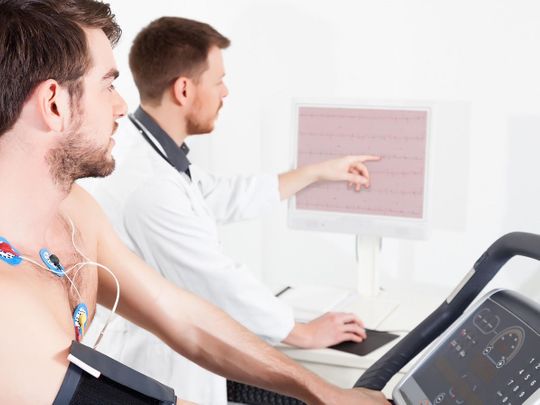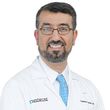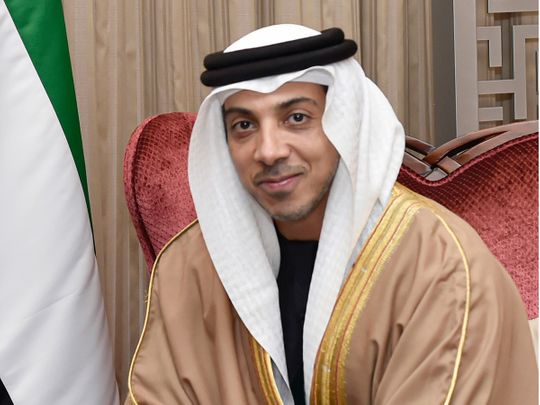World Heart Day, September 29: Call to action for cardiovascular health in the UAE

Image Credit: Shutterstock
Abu Dhabi | Dubai: Today marks a global reminder of the paramount significance of cardiovascular health as the world observes World Heart Day, an annual event held every September 29th. This day serves as a crucial platform to raise awareness, advocate for heart-healthy lifestyles, and celebrate the remarkable advancements in medical technology and practices that have revolutionised the field of cardiology.
In the United Arab Emirates (UAE), where heart disease claims one in every four lives, it stands as the leading cause of mortality in the region. Adding to this sobering statistic is the fact that cardiovascular diseases manifest a decade or more earlier in the UAE population compared to their Western counterparts.
Risk factors
This, combined with a higher prevalence of risk factors among men, underscores the urgent imperative to address heart health within the UAE. To provide context to this pressing issue, the UAE currently ranks as the 16th nation globally with the highest incidence of diabetes, a condition that significantly amplifies the risk of heart-related complications.
Furthermore, studies reveal that a staggering 33 percent of Dubai’s population is diagnosed with hypertension and obesity, further exacerbating the risks to heart health.

Leading experts from esteemed institutions such as the Cleveland Clinic Abu Dhabi’s Heart, Vascular & Thoracic Institute, Mubadala Health Dubai, and Healthpoint have joined forces to draw attention to these prevalent health issues and highlight groundbreaking innovations that have the potential to save and enhance countless lives.
Categories and complexity
Dr. John Paul Carpenter, a Consultant Cardiologist at Healthpoint, elucidates the intricate nature of heart disease by categorising it into five key areas: heart rhythm problems, heart valve disease, impaired cardiac pumping function, congenital heart disease, and coronary artery disease. These categories encompass the diverse spectrum of heart-related conditions individuals may encounter.

Drawing a familiar analogy, Dr. Carpenter likens it to diagnosing car troubles, where electrical faults, leaky valves, fuel supply issues, and design flaws all contribute to the problem.
Crucial step in prevention
Dr. Carpenter underscores the paramount importance of recognising key risk factors for heart disease. Smoking, including cigarettes, pipes, and sheesha, ranks among the most significant contributors to heart disease. Other critical risk factors encompass family history, diabetes, obesity, high blood pressure, and high cholesterol. Addressing these factors is imperative in mitigating the risk of heart disease.
Furthermore, Dr. Carpenter sheds light on the intricate connection between heart disease and hypertension, commonly known as high blood pressure. He elucidates, “High blood pressure increases the stiffness of the arteries, accelerating the damage and repair cycle.”
Dr. emphasised the age-old adage, “an ounce of prevention is better than a pound of cure.”
We commonly utilise an electrocardiogram [ECG] to provide a graphical representation of the heart’s electrical activity. Echocardiography, an ultrasound of the heart, offers a window into the structure and function of the heart.
Early diagnosis: Pioneering advances in technology
Dr. Carpenter underscores the significance of early diagnosis and highlights the remarkable advancements in diagnostic tools, including CT scanning of coronary arteries, which offers detailed insights into heart health.
He also emphasises the revolutionary role of artificial intelligence (AI) through advanced algorithms and deep learning neural networks in the field of medicine.
Dr. Niamh Kilcullen, Consultant Cardiologist at Mubadala Health Dubai, explains, “We commonly utilise an electrocardiogram [ECG] to provide a graphical representation of the heart’s electrical activity. Echocardiography, an ultrasound of the heart, offers a window into the structure and function of the heart.”
Advanced procedures, lifesaving devices
Dr. Kilcullen further delves into advanced procedures such as heart stents, coronary artery bypass, ablation, and valve surgery.
“Advanced imaging techniques, such as cardiac CT angiography, cardiac MRI, PET, and nuclear scanning are indispensable tools for investigating specific heart disease. In certain cases, we may need to perform coronary angiography or percutaneous coronary intervention, commonly known as stent placement, for patients with coronary disease. Those with arrhythmias, or electrical problems, may require electrophysiological testing or ablation procedures to restore normal heart rhythm,” Dr Kilcullen added.
For individuals with severe heart failure, more advanced treatments like cardiac transplantation are considered in appropriate cases. Routine check-ups, tailored to each patient’s unique condition, are recommended to monitor cardiac health.
Dr. Kilcullen underscores the importance of general health check-ups for everyone, advising that individuals should have their blood pressure and blood glucose checked at least once a year.
Dr. emphasised the age-old adage, “prevention is better than cure.”
Left ventricular assist devices (LVADs)
While there may not be a definitive cure for heart disease, the availability of highly effective treatment options offer hope to patients. When heart failure becomes severe, mechanical circulatory devices can provide vital support, prolonging and improving quality of life or even serving as a permanent solution.
If you have dysrhythmia, your heart might beat too fast or too slowly. Or your heart’s rhythm might be disrupted, leading you to feel like your heart skipped a beat. While dysrhythmias can be harmless most times, they can also lead to serious health problems if left untreated
Dr Mitesh Badiwala, Staff Physician in the Heart, Vascular & Thoracic Institute at Cleveland Clinic Abu Dhabi, highlights the transformative impact LVADs have on patients with end-stage heart failure.
LVADs are a crucial treatment option for the sickest heart failure patients, providing both short-term and long-term support. While they can extend survival and improve quality of life, they also carry significant risks and lifestyle adjustments
“LVADs are a crucial treatment option for the sickest heart failure patients, providing both short-term and long-term support. While they can extend survival and improve quality of life, they also carry significant risks and lifestyle adjustments,” Dr Badiwala said.
LVADs, or mechanical pumps, are revolutionary devices designed to assist the left side of the heart in patients suffering from heart failure. The device helps the lower left chamber (left ventricle) of the heart pump blood out of the ventricle to the aorta and the rest of the body.
This is an important job because the left ventricle sends oxygen-rich blood to the whole body, and one cannot live without a steady supply of oxygen to the cells and tissues.
LVADs serve various purposes, from acting as bridges until a patient becomes eligible for a transplant or finds a suitable organ, and also serving as a permanent therapy for those who may not be eligible transplant candidates. Over the years, LVAD technology has undergone significant advancements, resulting in smaller, more reliable devices. The newest generation of LVADs has shown promising survival rates, giving hope to individuals facing dire cardiac conditions.

Electrophysiology and wearable technologies: Revolutionising heart rhythm management
Dr Fereidoon Shafiei, Staff Physician in the Heart, Vascular & Thoracic Institute at Cleveland Clinic Abu Dhabi highlights how electrophysiology and wearable devices can help manage cardiac arrhythmias promoting patient safety and care.
“A rapid heart rate or skipped beat can be signs of a condition called cardiac dysrhythmia or arrhythmia which is an abnormal or irregular heartbeat. If you have dysrhythmia, your heart might beat too fast or too slowly. Or your heart’s rhythm might be disrupted, leading you to feel like your heart skipped a beat. While dysrhythmias can be harmless most times, they can also lead to serious health problems if left untreated,” says Dr Shafiei.
Electrophysiology, a specialised branch of cardiology, zeroes in on the heart’s electrical system and its related treatments.
3D mapping, flouroscopy-free ablation
The traditional approach to electrophysiology studies and ablations heavily relied on fluoroscopy, which exposed patients and healthcare professionals to ionizing radiation.
Newer technologies, such as 3D mapping and fluoroscopy-free ablation, reduce or eliminate this radiation exposure. These technologies also offer a safer and more precise approach to diagnosing and treating cardiac arrhythmias while substantially reducing radiation exposure.
Additionally, wearable devices like smartwatches and monitors are dramatically enhancing diagnostic accuracy. They empower healthcare professionals to detect abnormal heart rhythms at an early stage, allowing for faster interventions.
Dr Shafiei underlines the profound impact of technological advancements in this field, stating, “Advancements in electrophysiology, along with the integration of wearable technologies are revolutionizing the diagnosis and treatment of heart rhythm disorders.
“We are now able to effectively detect and diagnose a cardiac arrhythmia episode way in advance and use cutting-edge technologies that can provide personalised, precision treatment for each patient.” Taking proactive steps to address risk factors and maintain a heart-healthy lifestyle, including exercise, balanced diet, weight management, smoking cessation, alcohol moderation, stress management, and improved sleep, can significantly reduce the risk of heart disease and promote overall well-being.
On this World Heart Day, the UAE takes a united stand to prioritise heart health, fostering a healthier future for all its citizens.








